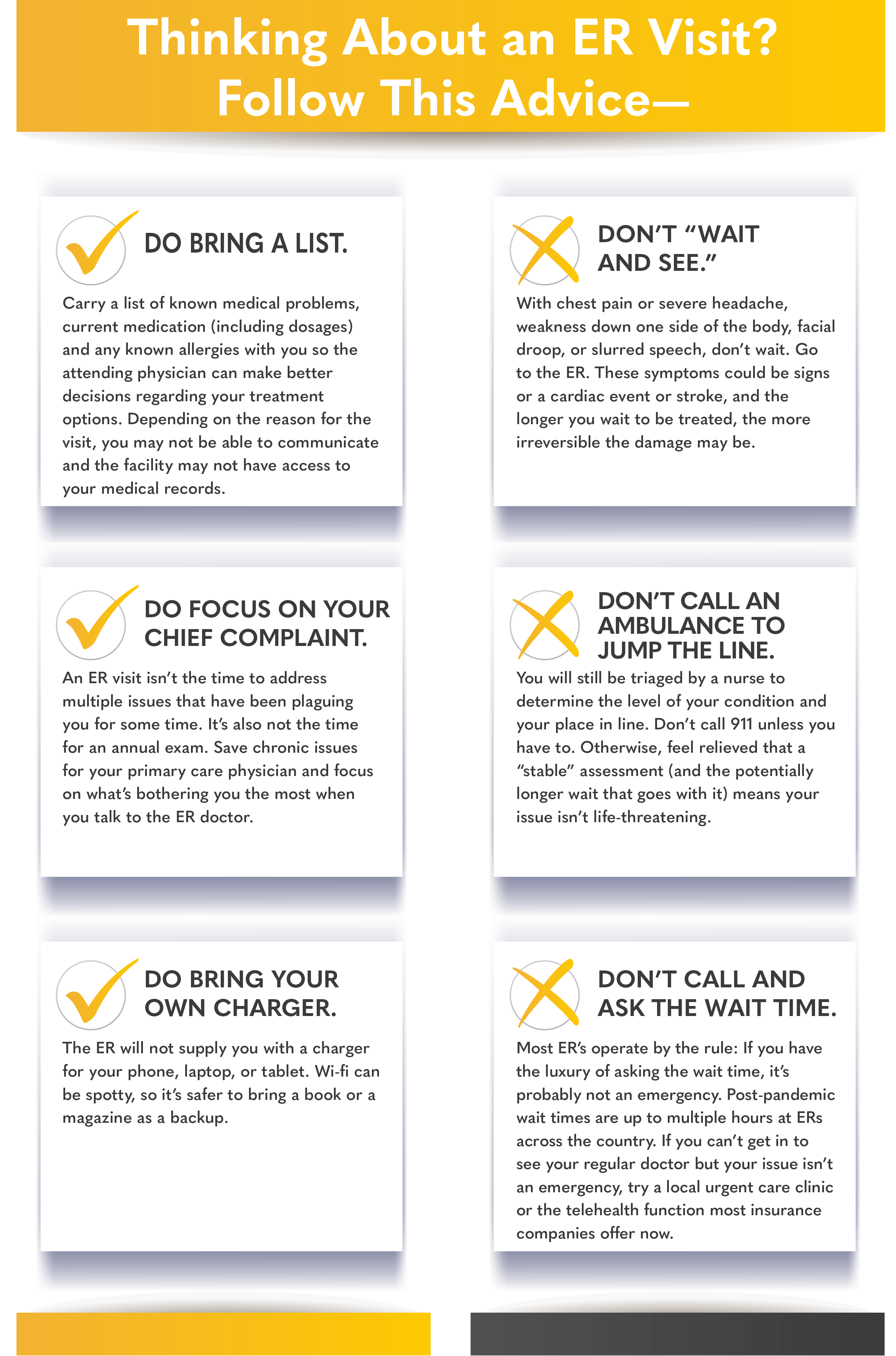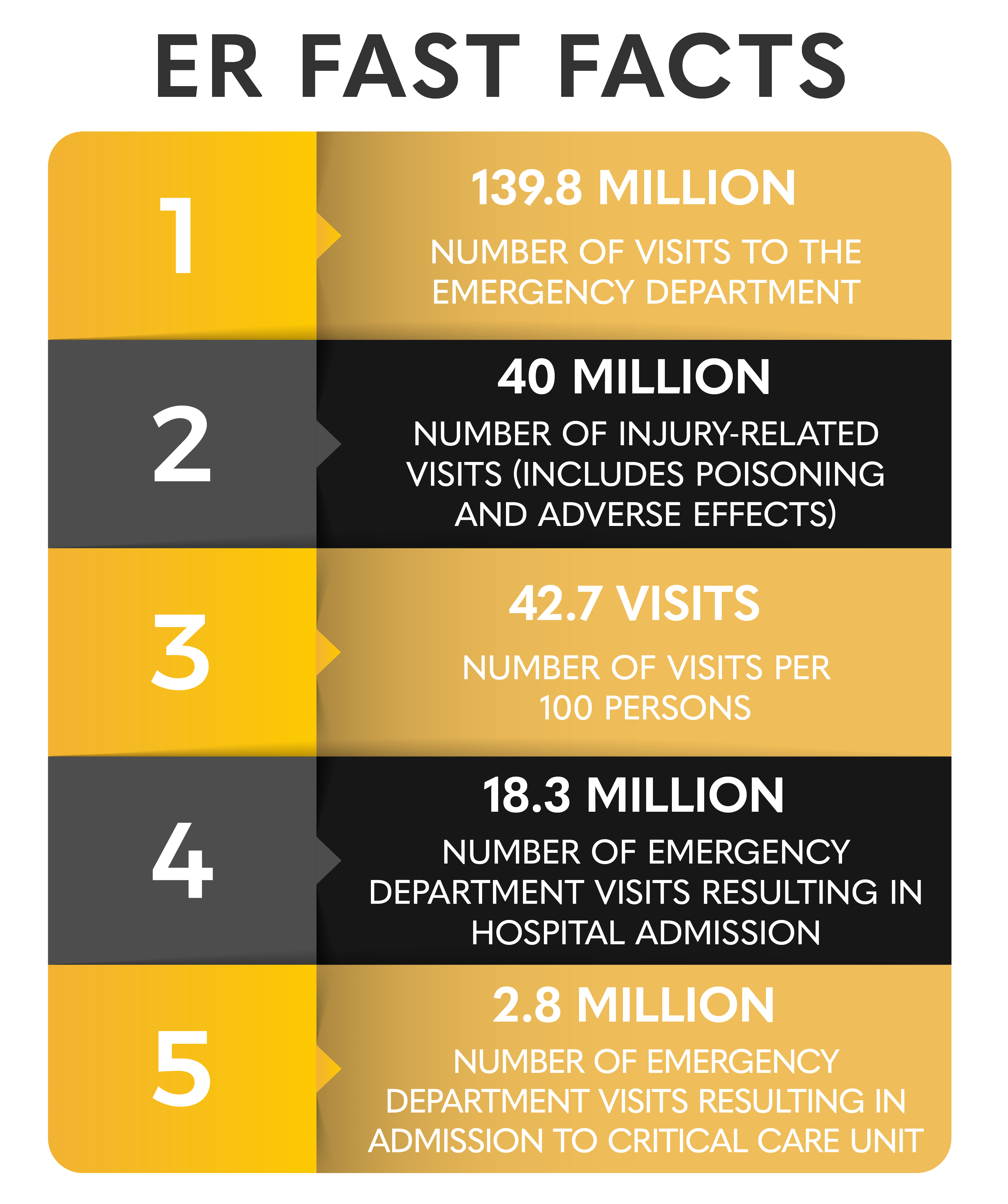
What do you get when you add normal ER patient load plus holiday festivities plus winter illnesses? A very crowded emergency room.
Studies show that January is often the busiest month of the year for healthcare professionals, ER visits, and hospital admissions—with the month of March not far behind.
In this blog, we take a closer look at the causes behind this increase and what patients and providers can do to be better prepared.
ER’s All Across the Country Are Already Crowded
Recent statistics show that emergency room visits have returned to pre-pandemic levels, and then some:
- Emergency department volumes have rebounded to new record levels, with 155 million visits in 2022 and a projected 160 million visits in 2023. Because of demographic pressures caused by the aging baby boomer generation, visits are expected to reach 180 million visits by 2028. About 80% of these patients arrive as “walk-ins” with around 20% arriving by ambulance.
- There is a compounding marked decrease in available staff, particularly nurses, due to healthcare professionals leaving the industry during the pandemic. This decrease has resulted in many inpatient beds being unavailable to emergency patients requiring admission for inpatient care. These patients now spend prolonged periods of time “boarding” in the emergency department, which then reduces the number of treatment rooms available for new ER patients. The end result is delayed workflow and more logjams, creating increased stress for patients and staff.
- The ER median boarding time increased from 121 minutes in 2020 to 192 minutes in 2022 and is trending even higher in 2023. The number of patients that leave emergency departments before treatment is complete has more than doubled in the past 4 years, to the highest level ever at 4.6% in 2022. And again, this metric is trending even higher in 2023.
The present overcrowding leads to long wait times, which results in increased levels of stress, which results in a higher number of people leaving without being seen. Across the U.S. this year, over 7 million patients will become so frustrated with waiting they will leave the emergency department before their treatment is complete. The sheer volume of patients, plus the added stress, also results in patient safety challenges and staff burnout.
Emergency Rooms See More Patients During Holidays
Speaking of safety, it’s widely known that the Fourth of July holiday sends quite a few people to the ER with celebration-related injuries, but why would the winter holidays cause an uptick in hospital visits?
During the festive period, more people are likely to indulge in alcohol, vary from their usual dietary and sleep habits, skip medications, feel holiday stress, and attend various parties or celebratory environments.
Studies show that the following ER case types increase during the holidays:
- Slips and Falls
- Sharp Object Injuries
- Falls From Heights
- Workplace Accidents
- Abdominal Pain and Diarrhea
- Psychiatric Disorders
- Poisonings
Be smart during the festive period—try to avoid stressful situations as much as possible, avoid dangerous party situations, and avoid overindulging in food or drink. Also stick to your medication regimen and your normal sleep schedule for a healthier holiday.
Seasonal Sickness Means More Visits to the ER
The winter months tend to see more respiratory illnesses and infections, which explains the increase in ER visits.
Urgent care facilities in Florida see an average of 15% more patients in March than they do in September. While returning to school in September can mean more exposure to germs, and summer sports can send injured patients to the ER, the end of January through March sees a surge in the numbers of people seeking urgent care. Visits peak in March when the weather shifts and allergies tend to get worse.
Pardon the pun: this rise in numbers means patients need patience. If you’re showing up with a sore throat or even a broken bone that isn’t life threatening, plan on a long wait.
We know most ERs have returned to pre-pandemic patient levels; however, patients are also now presenting with higher acuity—a severe situation or imminently dangerous health condition. This factor has also contributed to longer wait times.
Some Basic Emergency Room “Rules” to Follow
To mitigate long wait times, maybe the ER isn’t the best choice for the need. According to Dr. Michael Daignault, there are some do’s and don’ts to remember when contemplating a visit to the ER. These “rules” can help determine if the emergency room is the right place for you.
The most important “do” is to ask your doctor to go over your discharge plan. Also ask for a copy and review any lab and imaging results. It’s also crucial to follow up with your primary doctor or specialist (and take the paperwork and imaging from the ER visit). If the ER physician recommends a follow up, there’s a good reason.

Be Ready for the Rush, With Champion Premium Products
We know that January and March can be very busy times for emergency rooms around the nation. It’s important for providers and facilities to be prepared for the influx of patients, which can result in increased stress on providers and staff.
Comfortable patient seating and surgical chairs with easy access and modern conveniences helps improve patient mood and reduce provider stress, while comfortable and efficient clinical essentials like task seating can also boost staff morale.
Currently, there are just over 6,000 hospitals in the United States. In the past year, there were just over 34 million hospital admissions. If you are due for new chairs and haven’t already placed an order, be sure to do so before the end of the calendar year to have them in place for March (based on our twelve-week max lead time).
Contact us for a quote or to learn how our products and accessories can help ease the lives of patients and providers—in emergencies and year-round.

